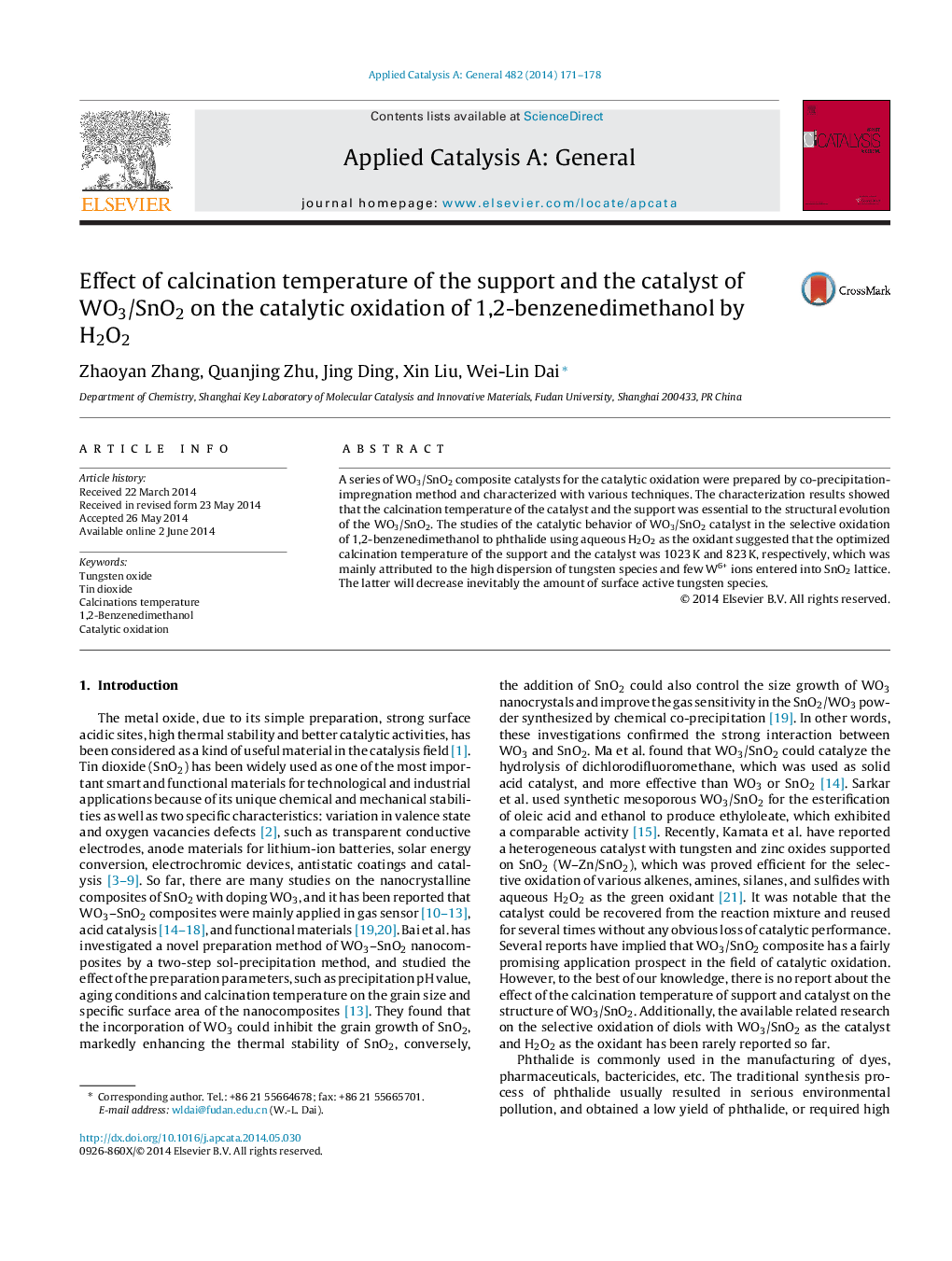| کد مقاله | کد نشریه | سال انتشار | مقاله انگلیسی | نسخه تمام متن |
|---|---|---|---|---|
| 39597 | 45828 | 2014 | 8 صفحه PDF | دانلود رایگان |

• Highly active SnO2-supported tungsten oxide catalysts.
• Composite catalysts prepared by co-precipitation-impregnation method.
• Calcination temperature shows unique influence on the surface structure.
• Excellent performance for oxidative lactonization of 1,2-benzenedimethanol.
• 25%WO3/SnO2-1023, 823 K is the best material.
A series of WO3/SnO2 composite catalysts for the catalytic oxidation were prepared by co-precipitation-impregnation method and characterized with various techniques. The characterization results showed that the calcination temperature of the catalyst and the support was essential to the structural evolution of the WO3/SnO2. The studies of the catalytic behavior of WO3/SnO2 catalyst in the selective oxidation of 1,2-benzenedimethanol to phthalide using aqueous H2O2 as the oxidant suggested that the optimized calcination temperature of the support and the catalyst was 1023 K and 823 K, respectively, which was mainly attributed to the high dispersion of tungsten species and few W6+ ions entered into SnO2 lattice. The latter will decrease inevitably the amount of surface active tungsten species.
A series of WO3/SnO2 composite catalysts are prepared by co-precipitation-impregnation method and applied to the selective oxidation of 1,2-benzenedimethanol to phthalide by using aqueous H2O2 as the oxidant. It is found that the catalyst with best catalytic performance is 25%WO3/SnO2-1023 calcined at 823 K, which can be attributed to the high dispersion of tungsten species and few W6+ ions entered into SnO2 lattice. The latter inevitably decreases the amount of surface active tungsten species. It is concluded that the appropriate calcination temperature of the support and the catalyst played an important role in the structural evolution of WO3/SnO2 composite, which was beneficial to improve the catalytic activity of the catalyst.Figure optionsDownload high-quality image (179 K)Download as PowerPoint slide
Journal: Applied Catalysis A: General - Volume 482, 22 July 2014, Pages 171–178